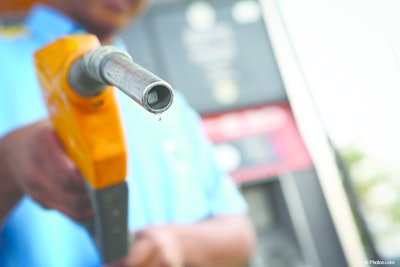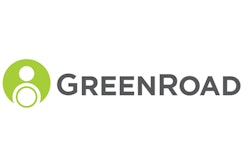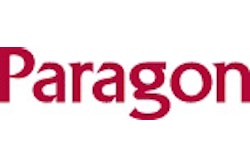
The movement towards operating a more sustainable fleet is hardly new to the transportation sector. However, as diesel prices continue to climb and emissions regulations become stiffer, the speed at which companies are purchasing more environmentally friendly equipment and investing in software and technology has started to accelerate.
“A lot of big companies have been improving their impact on the environment as part of their values,” observes Tanya Roberts, senior vice president, marketing of Redwood Shores, California-based GreenRoad. “That is a big driver for them to look for creative ways to achieve greener fleets.”
The quest to reduce fuel consumption and lower carbon emissions is another reason the transportation sector is looking at better ways to operate their fleets. In addition, the proliferation of anti-idling regulations, whether at the nation’s ports or at customers’ facilities, are propelling interest in sustainability.
According to the industry experts, alternative fuel vehicles are getting a lot of attention, especially as the network of filling stations has become more reliable. Alternative fuel vehicles, such as those that operate on compressed natural gas (CNG) and liquid natural gas (LNG), are proving to be an economical and a sustainable solution for customers.
The transportation sector is also pushing demand for more low resistance truck tires. Tim Miller, customer marketing manager, of Akron, Ohio-based Goodyear Tire & Rubber Company, says the tires can help cut fuel costs.
“The need for tires that offer low rolling resistance without sacrificing other key attributes that fleets require certainly is a trend,” he says.
On the regulatory front, the new Environmental Protection Agency (EPA) regulations, EPA Tier IV Final, are coming out at the beginning of 2013 and will require new engines to have a much higher emissions standard in comparison to what’s currently on the market. The Tier IV Final standard aims to reduce emissions by approximately 90 percent and will be adopted in both the U.S. and Canada.
Another regulation that has an impact on maintaining greener fleets is the California Air Resource Board (CARB), which requires the trucking industry to reduce their fuel emissions and decrease the weight of their truckloads. This regulation requires compliance for both new and used truck equipment that transports goods within California.
Green tools and equipment
Building a more sustainable fleet starts with superior tools and equipment. Following is a list of some of the leading products on the market:
Roadnet Vehicle Telematics. Roadnet’s vehicle telematics merges onboard monitoring technology and engine analytics with software in order to track vehicle usage and fuel consumption. “With the telematics box, food distributors can very quickly figure out: Where am I idling most? Who is idling most? And, in what situations do I idle?” explains Cyndi Brandt of Roadnet Technologies. The company’s telematics tool also helps reduce fuel consumption and improve driver performance.
FuelQuest Fuel Center. FuelQuest’s Fuel Center, a fuel management tool, is another way for fleet operators to reduce their costs and create a greener fleet. Fuel Center focuses on reducing fuel costs by analyzing such factors as inventory, freight, and invoice accuracy.
“FuelQuest provides outsourced services that utilize best-in-class technology to fleet operators,” says David Zahn, vice president of marketing of Houston, Texas-based FuelQuest. Fleet operators can spend more time focusing on their core business while improving predictability of their fuel expenses.
GreenRoad Driver Improvement Loop. GreenRoad’s Driver Improvement Loop helps improve driving performance by combining it with in-vehicle technology. This also gives drivers and managers immediate feedback if their activity is either unsafe or wastes fuel.
With GreenRoad’s Driver Improvement Loop a company can see historical data that creates insightful data analysis for each driver, which in turn boosts driver performance while helping managers stay on top of their fleet.
Paragon’s Route Management System (RMS). Paragon’s RMS helps manage daily routing to optimize efficiency. The software can also be used in conjunction with Paragon’s Fleet Controller to provide the most transportation proficiency.
“Our users regularly report back that they have saved 5 to 20 percent of transportation costs from Paragon’s more efficient routing,” says William Salter, president and CEO of the Frisco, Texas-based company. “A natural spin-off from that is also to run a greener fleet, because a major part of the cost reduction comes from using less fuel and cutting CO2 emissions.”
Thermo King’s Precedent. Thermo King’s Precedent is a trailer temperature control platform that provides compliance solutions for the future 2013 EPA Tier IV final regulations for engine emissions. Temperature control units are also available for California regulatory standards (CARB).
Precedent is available in two series in order to give food and beverage customers and fleet operators choices, depending on their location and needs. With certain applications there has been a noticeable fuel efficient savings of up to 35 percent.
PLM’s ColdLink. PLM’s ColdLink tracking service is a great addition to a fleet in order to help boost visibility remotely.
“Our onboard technology looks to monitor the product,” says Don Durm, strategic customer solutions of Montvale, New Jersey-based PLM Trailer Leasing. “It can (also) measure fuel consumption.”
ColdLink can also gather historical data about a fleet’s location as well as identify potential hazards before they occur.
DuraSeal Tires. Goodyear’s DuraSeal technology can help enhance fuel efficiency by preventing air from escaping from tires and maintaining proper inflation levels. DuraSeal is a gel-like substance that can seal punctures up to one-quarter inch in diameter.
Improving driver performance
Increasing a driver’s performance is one of the most important aspects to creating a sustainable fleet. Educating drivers on matters such as: proper driving techniques, lessening carbon emissions, and maintaining proper tire pressure are some of the ways to build a greener—and safer—fleet.
Driver performance services, such as GreenRoad, have online self training videos that assist with driver self-improvement. These videos help improve driver performance and identify and prevent unsafe driving habits.
“Safe driving equals greener driving,” emphasizes GreenRoad’s Roberts.
What lies ahead?
According to the experts, mobile technologies are rapidly emerging among the transportation industry. Some fleets are now providing smart phones for their drivers as a tool to review items such as driver performance and fleet performance.
Meanwhile, Thermo King will introduce one of the industry’s first dual-mode cellular/WiFi monitoring solutions in late 2012.
“The advantage with remote communications is that customers can use them to determine where their assets are located, to better utilize their equipment, and to optimize energy and operational efficiency,” says Doug Lenz, director of product management and marketing for Bloomington, Minnesota-based Thermo King. “Remote monitoring allows users to configure optimal refrigeration cycling parameters because transport refrigeration units cycle on and off, much like a home thermostat.”
A GREEN To-Do List
1. Measure emissions and set goals. Understand and track your fleet’s emissions. Set achievable company goals to reduce emissions in your fleet.
2. Improve fleet selection. Evaluate your fleet based on items such as: the cost of the trucks life cycle, choosing the correct size, fuel consumption, depreciation of the truck and the resale value.
3. Instill proper fleet usage. With proper driver education and consistent maintenance, this can help yield significant savings.
4. Keep track of your process. Track and share your progress with other employees and drivers in order to maintain and progress in creating a greener fleet.
Source: Environmental Defense Fund



















